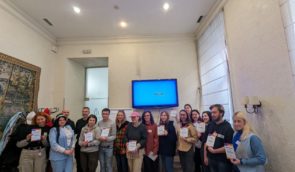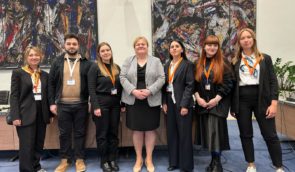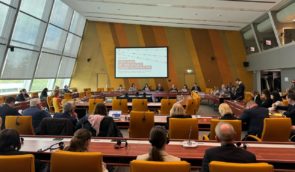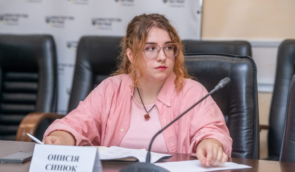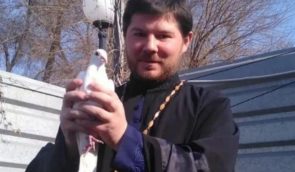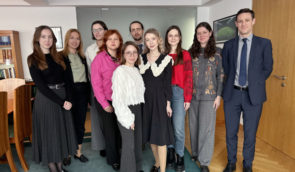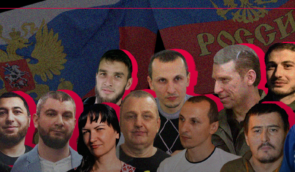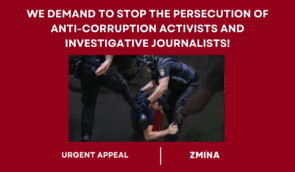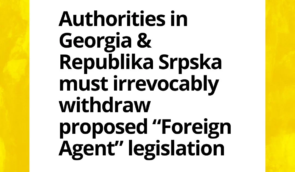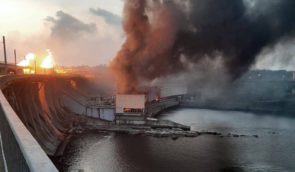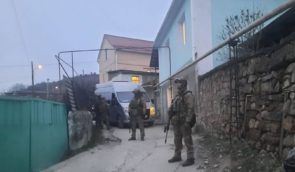Photo exhibition “Stories from occupied Crimea” opens in Kropyvnytskyi on anniversary of Russia’s illegal annexation of Crimean peninsula
Twenty-two photos of Ukrainian reporters Alina Smutko, Taras Ibragimov, and Alyona Savchuk are a unique chronicle of life on the peninsula illegally annexed by Russia and documentary evidence of repression against Ukrainian citizens, in particular representatives of the Crimean Tatar people.
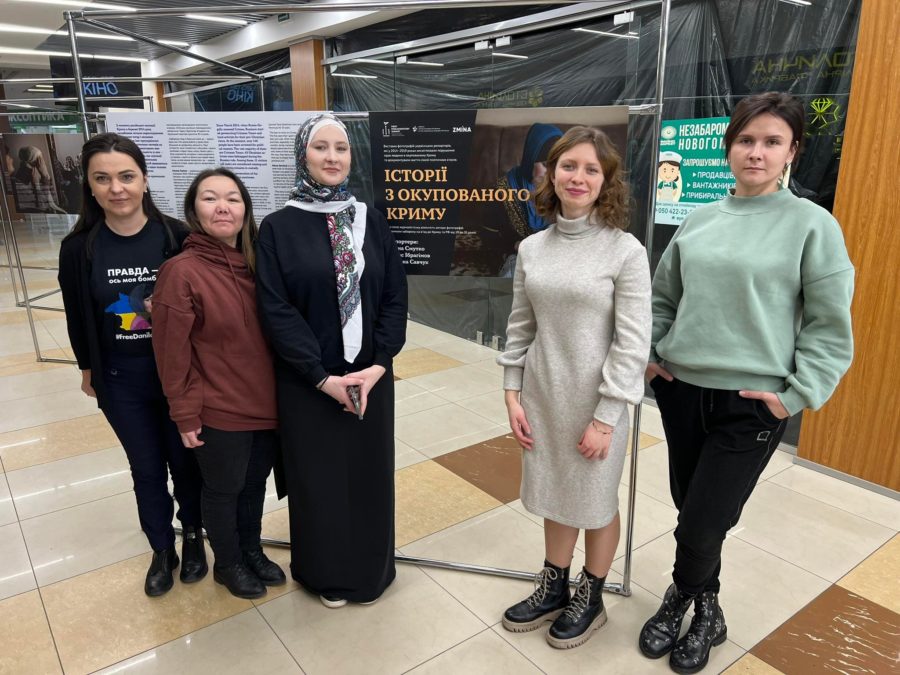
Large-scale persecution began on the first day of the occupation of the Autonomous Republic of Crimea by Russian troops. More than 150 people, most of them Crimean Tatars, have been arrested in many cases for political reasons, 43 Ukrainian activists have been kidnapped, 11 of them are missing, and one man remains in custody.
Vladyslav Yesypenko, a freelance journalist of Radio Free Europe/Radio Liberty, is one of the victims of repression by the Russian occupation administration. In March 2021, he was detained by FSB on trumped-up charges and is still in prison. His wife, Kateryna Yesypenko, is fighting for her husband’s release.
“Ahead of Russian Federation’s full-scale invasion of Ukraine, at least 116 Ukrainian citizens were in prisons in Crimea and in the territory of Russia as part of politically motivated criminal prosecution. The occupation authorities continued to pursue the practice of fabricating criminal cases on ‘terrorist’ and ‘extremist’ articles, charges of participation in illegal armed formations, sabotage, espionage, and illegal possession of weapons or explosives even after 24 February 2022. The total number of political prisoners exceeded 150 people. My husband Vladyslav Yesypenko, a freelance journalist of the Crimea.Realities project, is still behind bars. He was detained while performing an editorial task in Crimea on March 10, 2021. He was found guilty of storing and processing an explosive device,” Yesypenko said.
“As for the topic of Crimean political prisoners, several particularly negative trends can be pointed out after February 24. First, we are observing a rapid increase in the number of these cases, in particular, it concerns residents of Kherson and Zaporizhzhia regions who were detained and forcibly transferred to the temporarily occupied Crimea. Second, for the first time in the nine years of the occupation, two Ukrainian political prisoners — Kostiantyn Shyring and Dzhemil Hafarov — died in prisons due to lack of medical care. Unfortunately, more than 20 people also have significant health problems and may become new victims of the Russian Federation,” said Anna Sytnikova, chief consultant of the Crimea Platform operations service at the Mission of the President of Ukraine in the Autonomous Republic of Crimea.
During the photo exhibition opening, Head of the Human Rights Centre ZMINA Tetiana Pechonchyk also pointed to the fact that the Russian occupying power holds 15 journalists behind bars on politically motivated charges: “Most of them are Crimean Tatar citizen journalists who cooperated with the Crimean Solidarity initiative which unites families of political prisoners, lawyers, activists. These are Seyran Saliyev, Marlen Asanov, Tymur Ibrahimov, Server Mustafayev, Osman Arifmemetov, Remzi Bekirov, Ruslan Suleymanov, Rustem Sheikhaliyev. Over the past year, the occupation authorities imprisoned three more citizen journalists: Iryna Danylovych, Vilen Temeryanov, and Ernes Ametov. Therefore, we can say that every tenth Crimean political prisoner is imprisoned because of journalistic activities.”
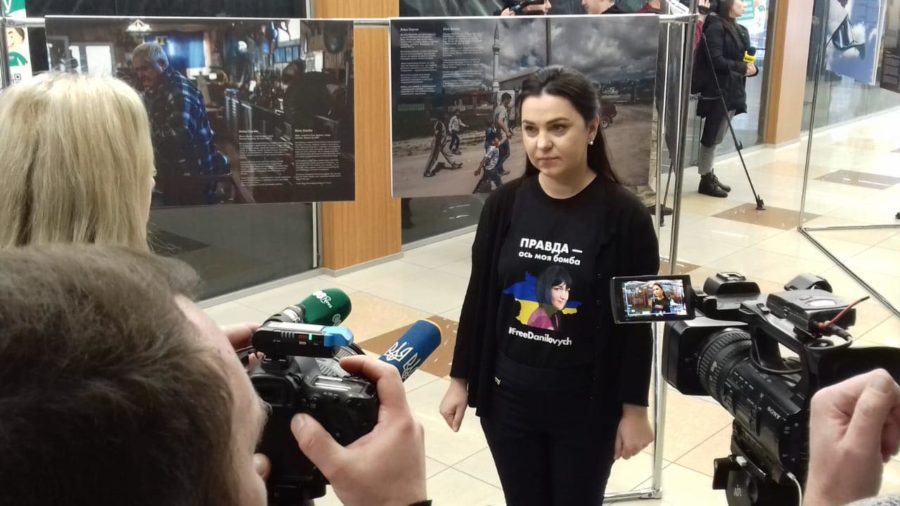 Tetiana Pechonchyk
Tetiana PechonchykIn 2016-2019, Alina Smutko, one of the authors of the photo exhibition “Stories from occupied Crimea”, worked in occupied Crimea until the FSB banned her from entering the peninsula and the territory of Russia. Alina’s camera recorded the lives of families, often with many children, who were left without a breadwinner after mass arrests.
“The stories which I and my colleagues, with whom we worked together in Crimea after the occupation in 2014, show in our photos talk about the fight against injustice on this side of the prison bars. Relatives of political prisoners went through the ordeal of searches at five o’clock in the morning, intimidation and harassment, threats and fines, numerous court hearings, where they had to watch how the system abused their relatives – completely unjustifiably and illegally keeping them in court “aquarium” and in pre-trial detention centers, accusing them of falsified crimes. And this struggle continues up to this day although today we have very few means to see it and show it to the world,” Smutko said.
The presented photos were taken from 2014 to 2019 when the authors could still travel to Crimea. The Russian occupation administration banned them from visiting the peninsula for a period of 10 to 35 years.
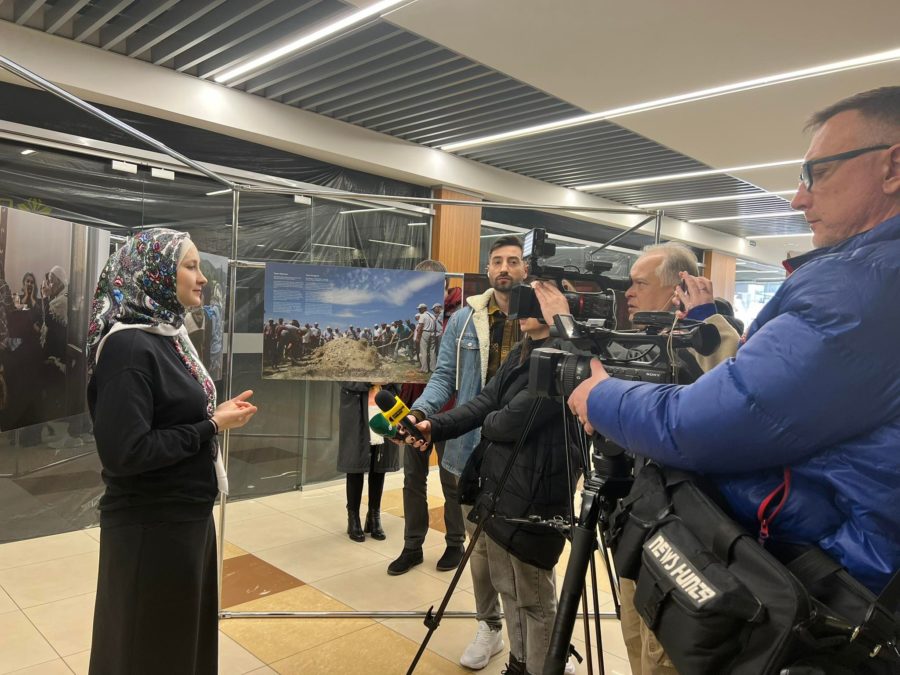
Last October, the photo exhibition “Stories from occupied Crimea” was presented at the Parliamentary Summit of Crimea Platform (Zagreb, Croatia), in December – during the solemn events on the occasion of the 30th anniversary of the Mission of the President of Ukraine in the Autonomous Republic of Crimea.
Kropyvnytskyi became the second city where the photo exhibition “Stories from occupied Crimea” was presented to a wide audience. Earlier, it was held in Khmelnytskyi and will also be presented in Chernivtsi, Odesa, Lutsk, and Lviv.
Background. The photo exhibition was created by the Human Rights Centre ZMINA in cooperation with the Mission of the President of Ukraine in Crimea.

